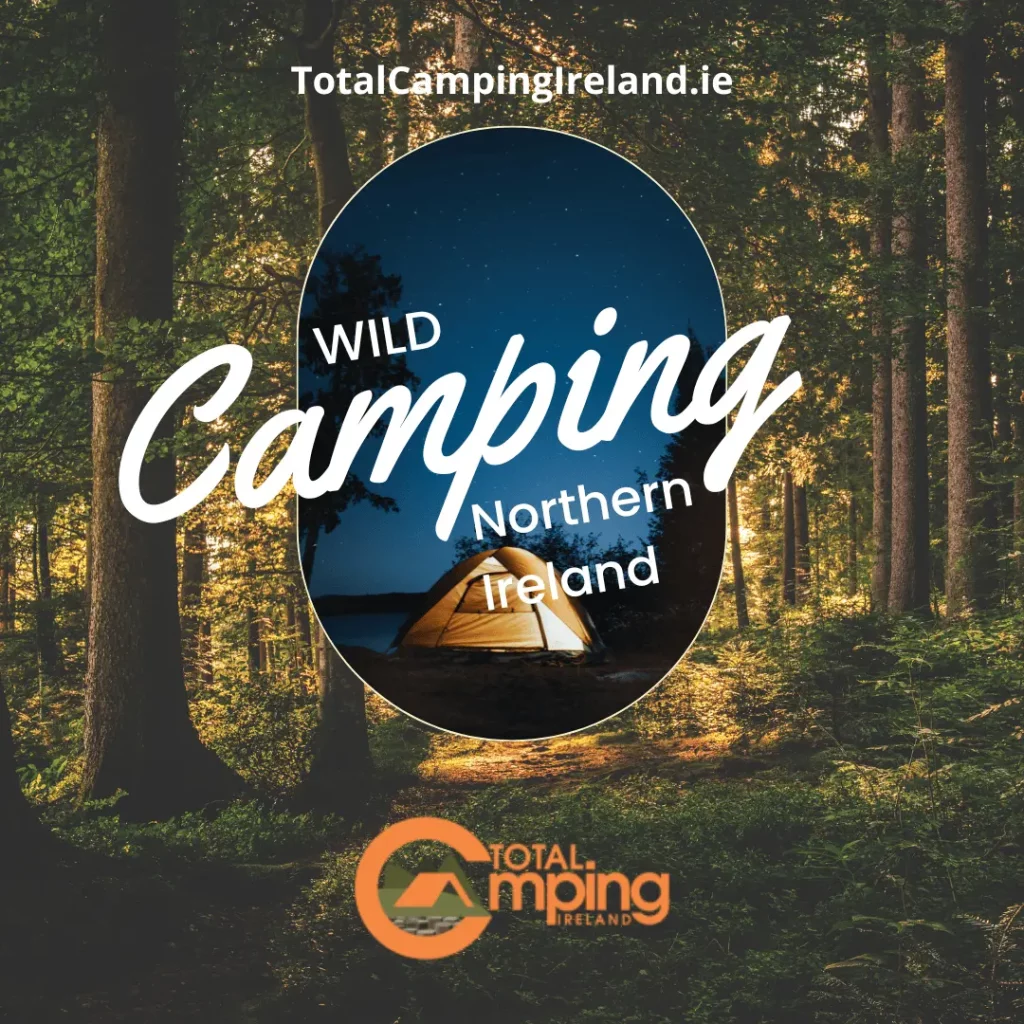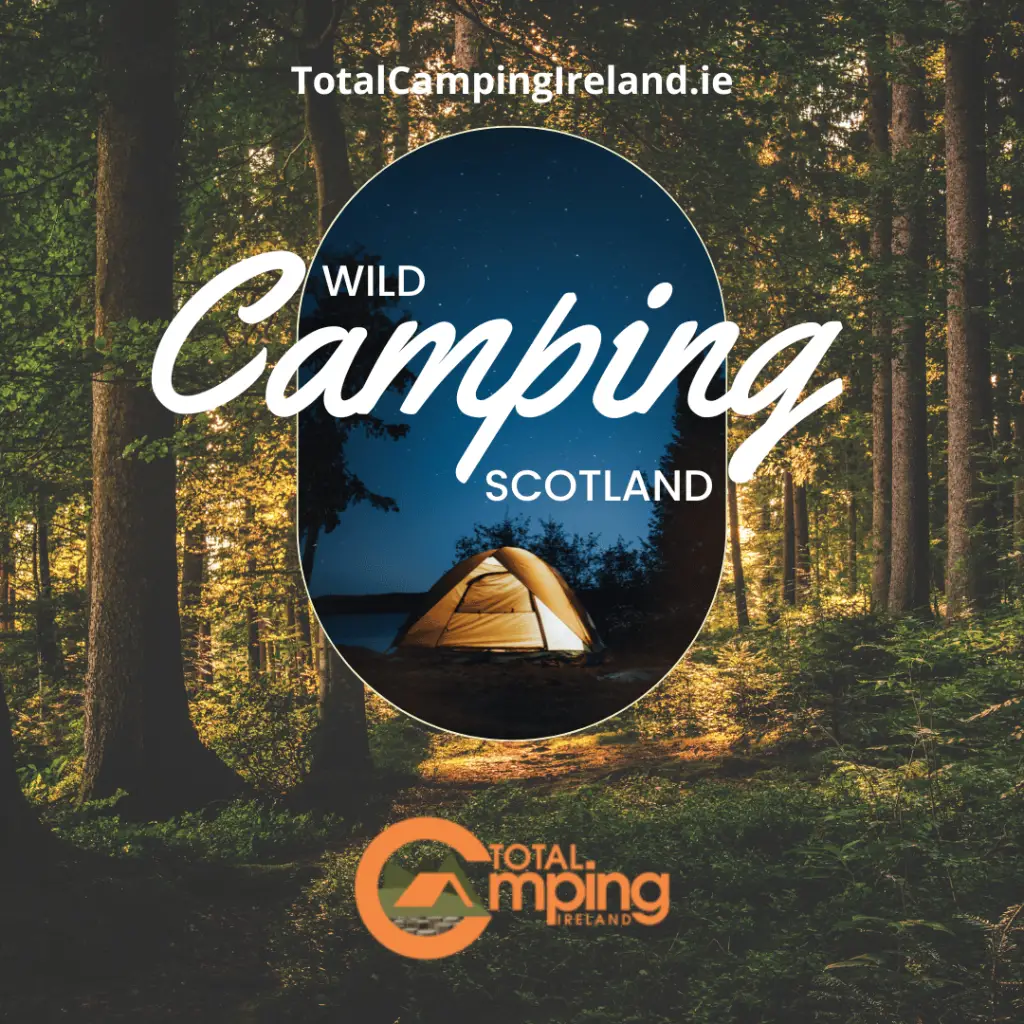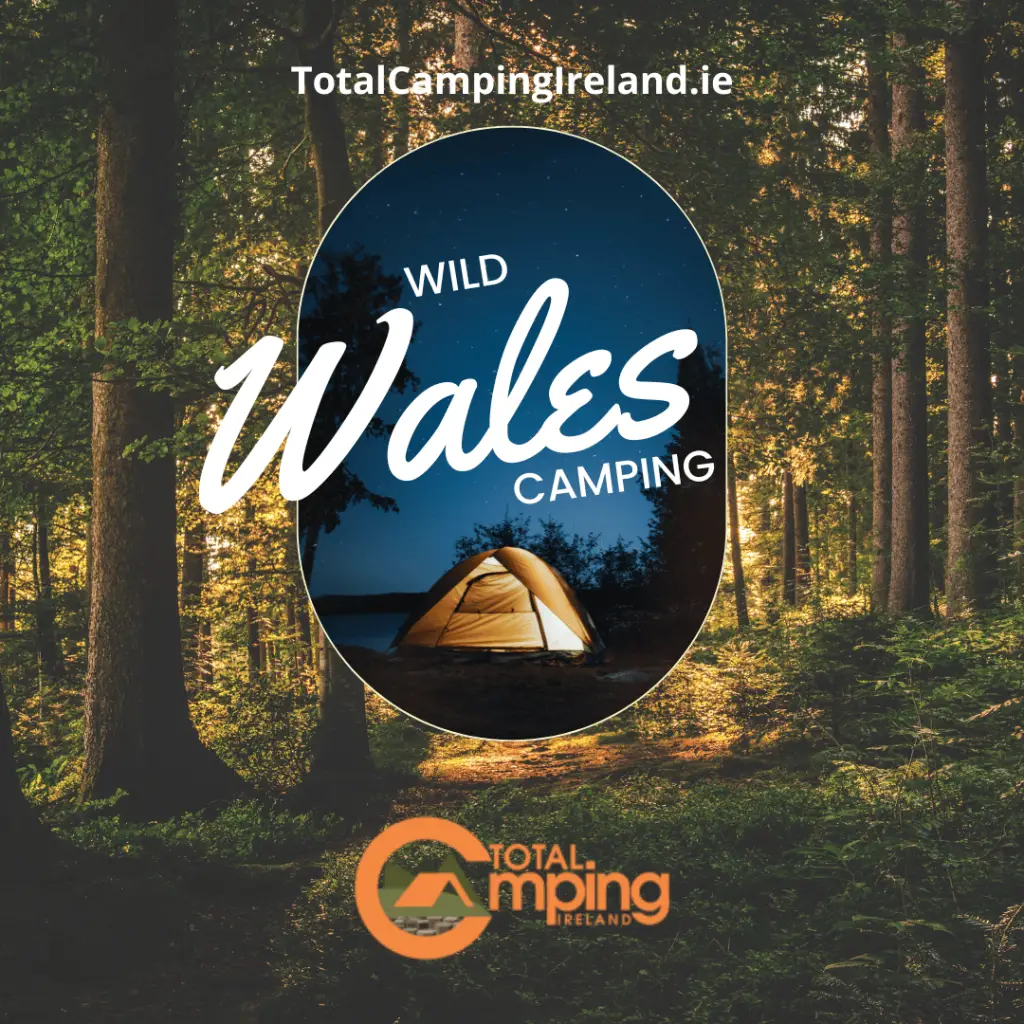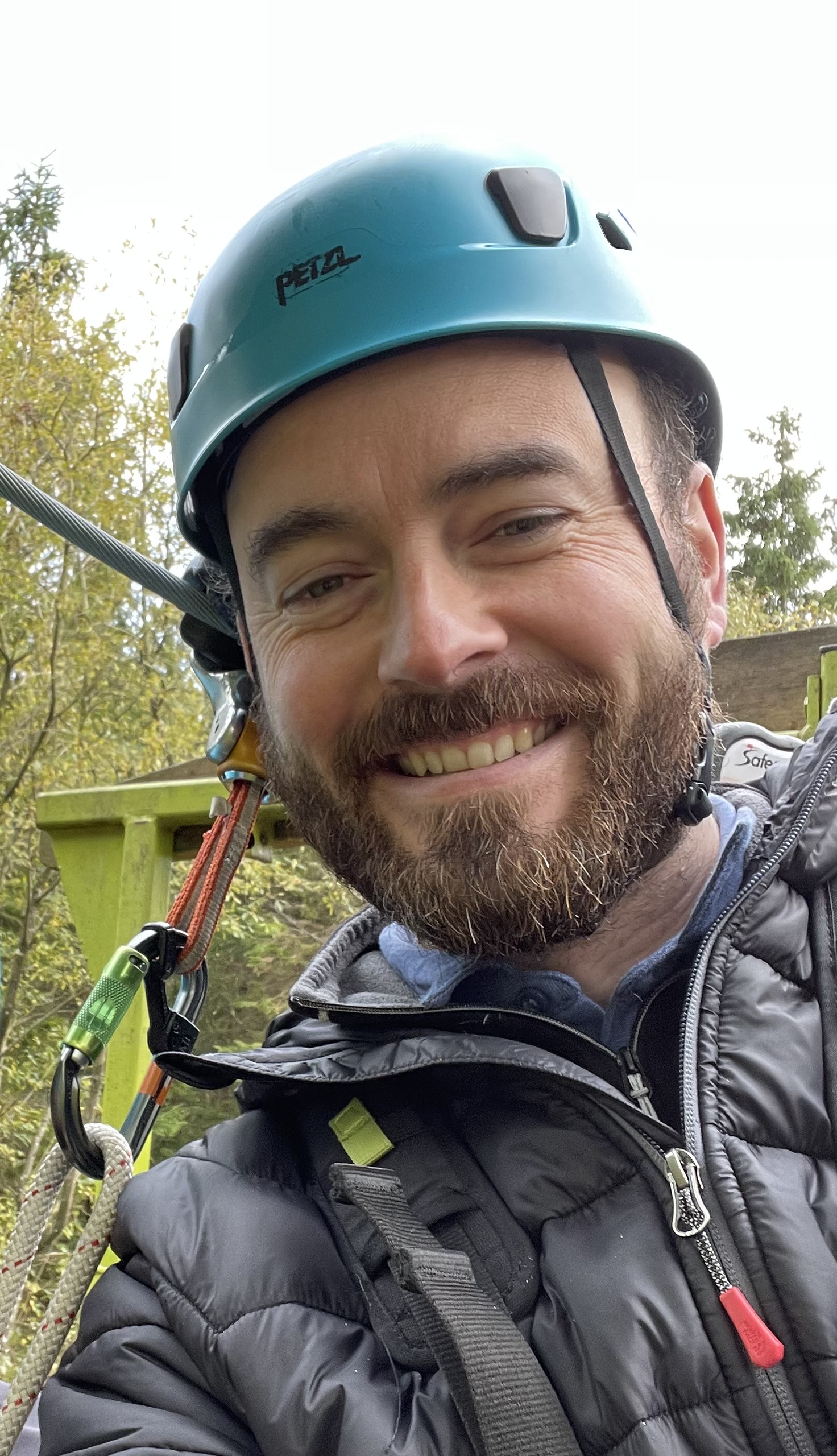Check Out Our Map Of Wild Camping Spots, Along With Everything You Need To Go Wild Camping In Ireland
Table of Contents
Wild Camping Spots Map Ireland
Wild Camping In Ireland
You may not have heard about wild camping if you’ve looked into camping. So what is wild camping? Wild camping is about going off the beaten track and getting out into the peaceful, empty and vast wilderness of Ireland to spend time alone with the world, away from the masses in caravan parks and campsites. Sound fantastic.
Below we will look at Wild Camping that will help you have a lifetime experience, and these include what is wild camping is legal, what equipment I will need, and the best places to go Wild Camping in Ireland.
What Is Wild Camping?
This is one of the most critical questions, and we should address it before we move on. Here in Ireland, it is not always as simple as it sounds, primarily due to having two jurisdictions having different laws that govern wild camping access (Ireland and Northern Ireland – which is part of the UK).
Landowners can be reluctant to let people camp on their land, and many publicly owned spaces prohibit camping for both tents and campers/motorhomes.
From a purely technical standpoint, wild camping is not legally permitted in Ireland. This primarily arises because most of the land is privately owned.
In other words, you would be considered a trespasser if you decided to prop up your tent on someone’s property (even if you were unaware of such ownership).
Let’s also not fail to mention that there are many fences, boundaries, and other marked borders. Crossing these is prohibited by law.
The good news is that more remote locations (such as those associated with Ireland’s northern and western portions) tend to tolerate wild campers. This is particularly true for areas near lengthy hiking trails or deep within forests.
Cyclists, hikers and similar enthusiasts will often take advantage of this greater sense of tolerance. Still, it is essential to determine if the land happens to be private property. If it is, you can always ask the owner for permission to stay for an evening or two.
The chances are high that landowners will meet you with an amenable response.
Is Wild Camping Legal in Ireland?
This is one of the most critical questions, and it should be addressed before we move on. Here in Ireland, especially due to having two jurisdictions having different laws that govern access to wild camping (Ireland and Northern Ireland – which is part of the UK), it is not always as simple as it sounds.
Landowners can be reluctant to let people camp on their land, and many publicly owned spaces prohibit camping for both tents and campers/motorhomes.
From a purely technical standpoint, wild camping is not legally permitted in Ireland. This primarily arises because most of the land is privately owned.
In other words, you would be considered a trespasser if you decided to prop up your tent on someone’s property (even if you were unaware of such ownership).
Let’s also not fail to mention that many fences, boundaries and other borders are marked. Crossing these is prohibited by law.
The good news is that more remote locations (such as those associated with Ireland’s northern and western portions) tend to tolerate wild campers. This is particularly the case for areas that are found near lengthy hiking trails or deep within forests.
Cyclists, hikers and similar enthusiasts will often take advantage of this greater sense of tolerance. Still, it is essential to determine if the land happens to be private property. If it is, you can always ask the owner for permission to stay for an evening or two.
The chances are high that you will be met with an amenable response.
The Wild Camping Ireland Code
To make the most out of your experience, to remain safe and avoid any potential legal infractions, it is crucial to recognise the wild camping code of conduct. Some of the major points include:
- Never leave any debris or rubbish behind.
- Obtain permission from a landowner in advance if you are staying on private property.
- Always plan.
- Do not harm any animals or other wildlife.
- Camp on safe ground.
- Never disturb the environment (leave what you find).
- Be careful when managing campfires.
On a final note, it is essential to mention that the majority of campers will follow one of these four routes throughout Ireland:
- The Coillte Land and Recreational Forests
- National Waymarked Trails.
- National Looped Walks
- The Slí na Sláinte
Nearby landowners have allowed these trails to impede their properties, so wild camping is generally tolerated in such areas. As always, ask permission if you are in doubt.
What Equipment Will I Need?
In this section, you can find everything you need can be broken down into two categories: essential gear to go Wild Camping and the equipment that may come in handy.
Never forget to bring along the following gear:
A Tent: There is always a lot of debate over the best tent or shelter. Some bushcrafters and wild campers prefer the idea of creating havens with tarps with natural resources instead of pitch your tent in wild camping spots.
I prefer using a small tunnel, a two-person tent with a camouflage tarp that blends into the surrounding landscape, as I prefer being self-contained, out of sight and leave no trace as much as possible. Whether you like tents or a more back to natural form of wild camping, I think tents, as long as they are compact, with a low profile, are an adequate shelter for a wild camping spot in Ireland.
Sleeping Bag
When you are going camping this year, your best investment should be in your sleeping bag or Bivvy bag. It’s easy to misjudge how cold it can get outdoors here in Ireland at night, and trying to nod off when you can’t get properly warm is an absolute nightmare.
Camping Stove
One part of wild camping that is often underrated is enjoying a warm meal.
While there is nothing wrong with protein bars and dried meat, a warm meal can give you the boost you need at the end of a days walk along the waymarked trails in the national parks.
A reliable stove or fire pit helps you stay warm with a hot cuppa in the morning or rice and chicken in a pot in the evening. It can also help when your body temperature gets cold and wet, easily in a wild camp in Ireland.
A Headtorch
There are four main things to look for in a head torch are:
- The brightness (anything over 300 lumens is enough for a wild camp).
- Battery life (essential).
- Weight (the lighter, the better).
- Ease of use (not too fiddly with cold, wet hands).
Food and Drinking Water
While mostly Irish water is some of the best in the world, we still recommend bringing your own in a small water butt if you can’t find a fresh stream near your wild camping spot.
A Charged Mobile Phone
The emphasis is on charging here, as for the most part, even in the national parks, most wild camping spots will have no charging facilities. A mobile is invaluable for calling for help and finding your location (GPS works even with no signal on some phones), entertainment. Just a back up though, we also have a portable power pack and solar charger for multi-day trips.
Having said this, others wish to pit themselves against the environment by testing their bushcraft skills. The associated gear will, therefore, vary.
Some other materials which are highly recommended include:
- A map
- A first-aid kit
- A fire-starting device (such as a magnesium bar)
- An emergency whistle and blanket
- A compass
This checklist can be increased or decreased depending upon your unique skills and requirements.
Wild Camping Tips
There is nothing wrong with feeling a bit hesitant if you are new to the concept of wild camping. This is quite normal, and if anything, such a sensation can hone your skills.
However, never present yourself with overly tricky situations if you possess little experience. Avoid inclement weather whenever possible (check the forecast via Met Eireann or Met Office in advance).
Fully extinguish any campfires before you leave the site. Dress appropriately for the season in question and purchase a durable pair of hiking boots.
Always tell at least two other people where you are going and when you expect to return. Pack light, and yet, never forget to include the essentials.
Finally, be sure to pick a spot with amazing views so that you will have memories to last a lifetime. This brings us to the next section.
17 Amazing Locations to go Wild Camping Spots in Ireland
Now that we have taken a look at the basics of wild camping, it only makes sense to look at some of Irelands best locations ahead of your adventure.
1. The Beara Peninsula (County Cork)
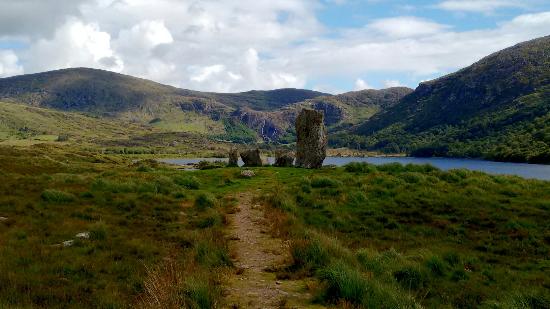
This location boasts a walking route of no fewer than 206 kilometres, and it is known for its open-air beauty. Rolling hills and scenic coastlines are only two of the features to enjoy.
This is also a lesser-known location, so it is an excellent option if you are looking to avoid others.
2. Black Valley (County Kerry)
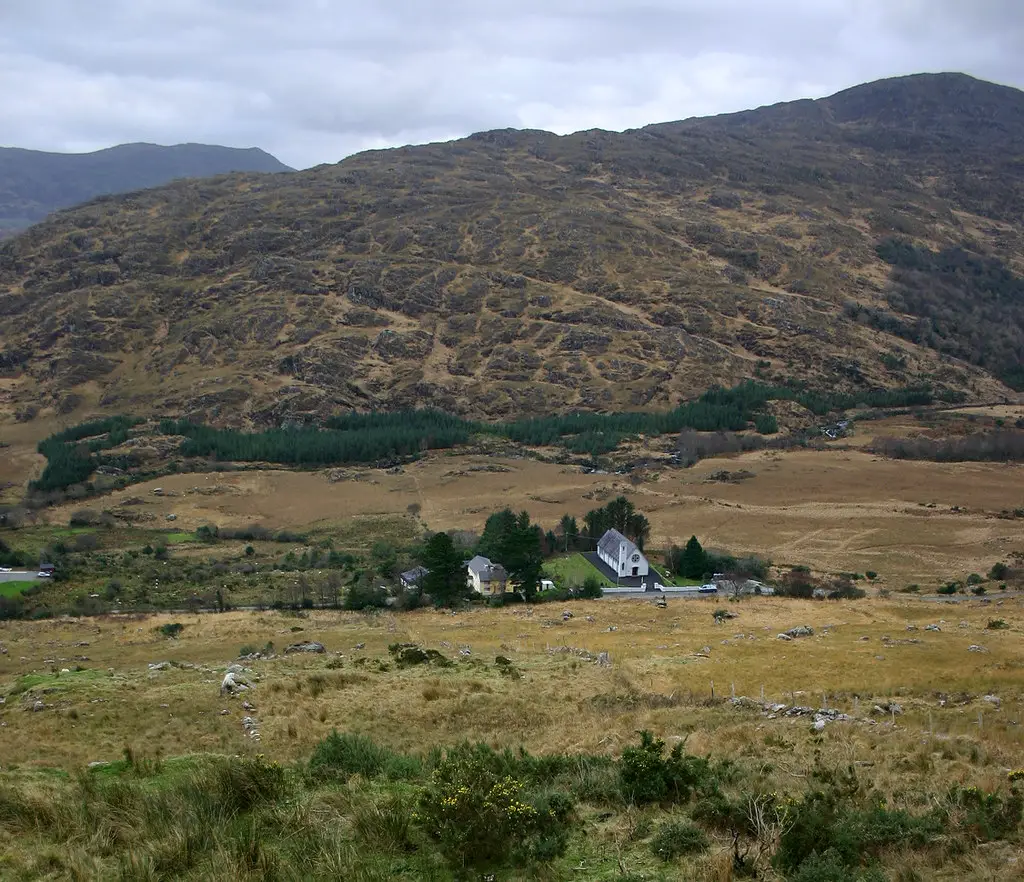
Somewhat reminiscent of the gorges often seen within the Rocky Mountains, Black Valley is defined by majestic pines, cerulean blue lakes, untamed rivers, and green glens. This area was one of the last to be provided with electricity, so it is “off of the grid”. It is best to avoid winters here, as they can be pretty harsh if you are inexperienced.
3. Lough Avoher (County Mayo)
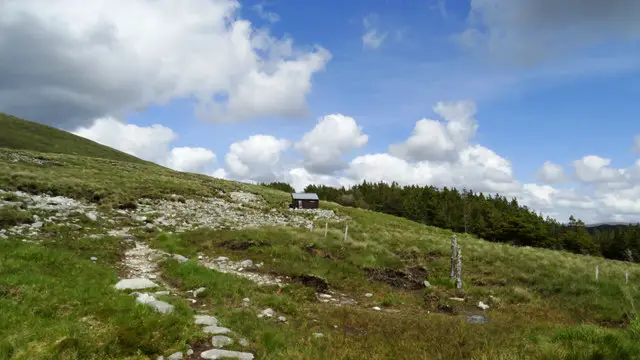
Those who are hiking along the Bangor Trail in Co Mayo will often utilise a small hut to be found here. It can sleep up to five, and while there is nearby water, it will likely need to be treated. The nearby Glennamong Ridge highlights this region’s unapologetic wildness, so it is perfect if you have been hoping to get away from it all. Keep in mind that open fires are prohibited due to the chances of high winds and dry brush.
4. Powerscourt (County Wicklow)
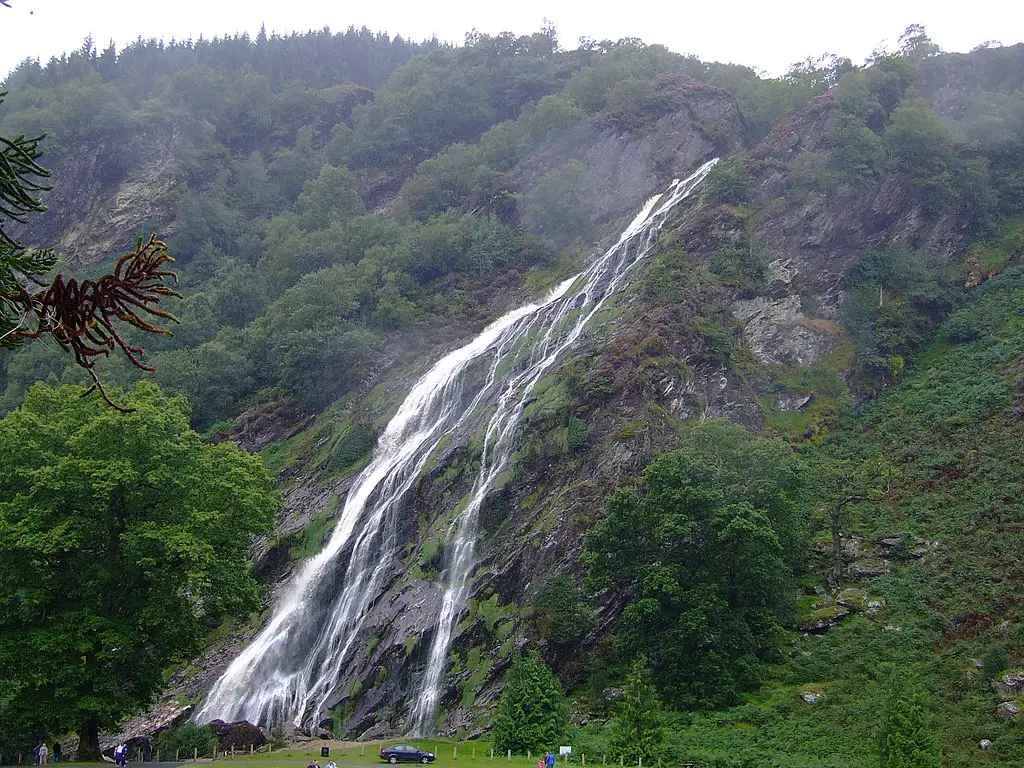
This next spot’s name is a bit misleading, being nearby to Powerscourt Estate (camping is forbidden here). However, you will find Lough Tay not far from this amazing estate. Located between the Djouce and Luggala mountains in Co Wicklow, this tranquil valley will provide you with a much-needed sense of peace and tranquillity.
5. Altnabrocky (County Mayo)
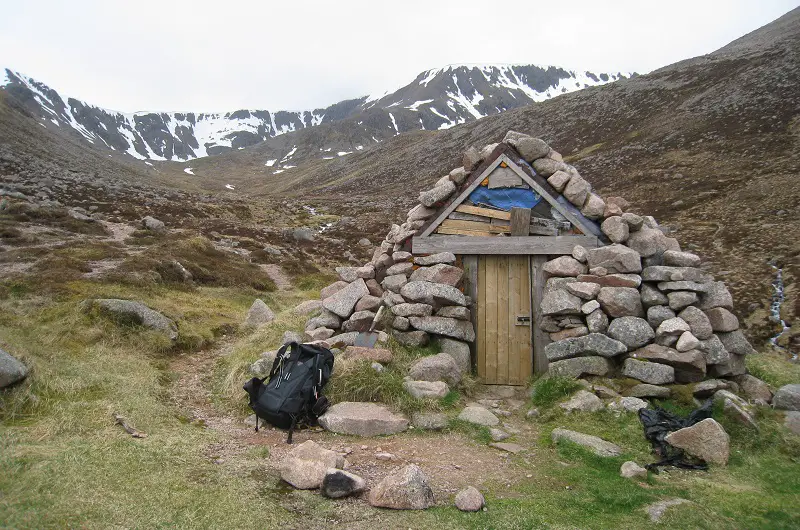
If you are looking to leverage a ready-made shelter’s benefits, Altnabrocky is a great option to keep in mind. Found along the Western Way, you can enjoy Nephin Beg, Lough Con and Sieve Carr’s views. Nearby streams likewise offer some of the best trout fishing in Ireland, so be sure to bring along your grille!
6. The Wicklow Way (County Wicklow)
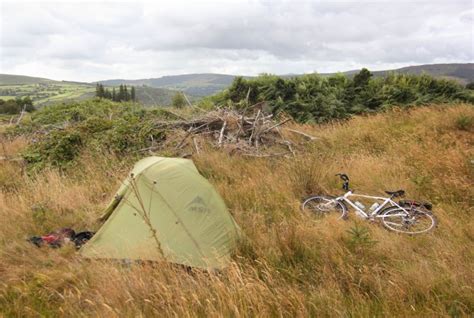
This long distance route through the Wicklow Mountains National Park is very for hikers and outdoor enthusiasts. However, please note that it can become quite crowded during the summer. This is why many choose to visit during the early autumn or the late spring. Not only is the Wicklow Way more peaceful then, there are some Adirondack shelters in the national park at Brusher’s Gap (Paddock hill) and two similar huts or adirondack shelters at Mucklagh and Mullacor
7. Glenregan, County Offaly
The Glenregan is found along the Slieve Bloom Way and close to the foot of the nearby mountains. The Camcor River is an excellent camping spot, and its handful of small waterfalls will provide a soothing touch to your journey.
8. Derrynane Beach, Country Kerry
Anyone who is a fan of the maritime environment will love this next suggestion. Located upon the Iveragh Peninsula’s shores, tranquil dunes and calm waters will make the perfect backdrops for your wild camping experience.
9. Glenbarrow Wild Camping (County Laois)
While somewhat rugged, this location is thought to be one of the most picturesque within all of Slieve Bloom. An open-air camping spot is found not far from the main trail. While no campfires are allowed, and there are no nearby facilities, the simplistic nature of Glenbarrow continues to attract visitors.
10. Coomshanna Wild Camping (County Kerry)
The primary appeal of this location is that it overlooks the mirror-like waters of nearby Dingle Bay. You can find freshwater streams here, and the site itself is located close to the Gleensk Viaduct. The open-air nature of this campsite is one of its most appealing traits.
11. The River Barrow (County Kildare)
Hikers, bicyclists and canoeists have all flocked to this location thanks to its natural beauty as well as its spectacular forest views. A local organisation can provide canoes and other amenities if you need to stock up on goods. While salmon are found within the river, it is good to research the local fishing laws in advance.
12. Knockadav Wild Camping (County Waterford)
Seasoned wild campers may prefer this location due to its exposed nature and the fact that it is found at higher altitude. In other words, its presence within the Knockmealdown Mountains signifies that you will be exposed to the elements in these remote areas on occasion. However, this is undoubtedly offset by its raw beauty and untamed personality.
13. Sherkin Island (West Cork)
As Sherkin is relatively small, we recommend you choose to get here here to explore its shores on foot. You camp along the sandy beaches before making your way inland to experience its verdant green pastures. While there is indeed much wilderness about, you can always head to nearby Jolly Rodger Pub for a pint after your journey is complete.
14. Blacksod Bay (County Mayo)
This bay is located within the western portion of Ireland and relatively far from any noticeable civilisation signs. Fillmore Beach is the preferred spot if you hope to set up camp, as it provides beautiful views of the nearby waters. If you happen to be arriving during the early spring or late autumn, be sure to bring the appropriate clothing; this area is entirely exposed to the elements.
15. Baginbun Beach (County Wexford)
Found approximately ten miles from Hook Head, Baginbun Beach is excellent for a wild camping excursion due to its somewhat protective nature and thanks in no small part to overhanging cliffs. Some wild campers will arrive during the summer to take advantage of the nearby waters. However, beware of potentially strong currents on occasion. You can access the coastline via a car park.
16. Doonloughan Beach, Connemara
This new strip of sand is found approximately two kilometres from the town of Ballyconneely, and it is known for its proximity to the sea. Surfing, scuba diving and boating are a few popular activities. However, the landscape’s rugged nature also makes this location ideal for a night or two of wild camping. Those who wish to set up camp directly on the beach can take advantage of a series of craggy rocks that will shelter them from the wind.
17. Omey Island, Connemara
Omey can be accessed on foot during low tide, so a ferry is generally unnecessary. There are few houses here, and it is a good idea to bring along any supplies that you may require. This sense of isolation is balanced out by the Aughrus Peninsula’s stunning vistas and the Atlantic Ocean itself. If you are looking for advice on the tides or should you require supplies, it is wise to visit Sweeney’s Shop in nearby Claddaghduff before departing.
Please keep in mind that there are many other wild camping locations throughout Ireland, so never hesitate to speak with others or research the Internet further. There is something decidedly visceral about these types of experiences, and the ability to enjoy a personal relationship with nature satisfies one of our most primal instincts. This is the reason why wild camping continues to attract a growing number of enthusiasts. If you have been hoping to get away from the hustle and bustle of daily life, there is arguably no better way than through this fantastic hobby.

